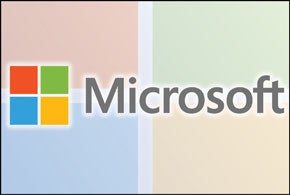General availability of Microsoft Teams was in March 2017, but more than 50,000 organizations have been using the platform since it was previewed in November 2016. These customers include Accenture, Alaska Airlines, Cerner, ConocoPhillips, Deloitte, Expedia, J.B. Hunt, J. Walter Thompson, Hendrick Motorsports, Sage, Trek Bicycle and Three UK.
Referring to Teams as “the chat-based workspace for Office 365,” Microsoft lists four core promises for this new digital workspace:
- Chat for today’s teams
- A hub for teamwork
- Customization options
- Security teams’ trust
Chat for Today’s Teams
The Microsoft Teams experience is based on persistent chat, with all members of a team able to participate, and all participation preserved for later review. The current version of Teams does not support the inclusion of team members external to the organization, but Microsoft has indicated plans to include it.
A Hub for Teamwork
Since Teams is part of Office 365, all the Office applications are fully integrated with it. All participants can simultaneously view and edit documents, thereby enabling and facilitating immediate collaboration.
“Teams enables ambient and seamless collaboration,” said Stephen Costigan, CEO of Microsoft partner CloudScale. “It provides a connected experience for the Office 365 tools, which are typically disparate from a user interaction perspective. It brings the power of Office 365 features out of the dark and onto center stage from a business perspective.”
Microsoft supports the entire collaborative event by providing extensive scheduling, free/busy calendar, recurrence and other features. Enhanced communication is enabled through easy transitions from chat to high-quality voice and video.
Customization Options
Veteran Microsoft partners will find the extent of external integration refreshing. Teams users can customize their workspace extensively using Tabs, Connectors and Bots, many of which are already available from third-party providers. The platform is already aligning with the emerging world of cognitive applications and artificial intelligence (AI) through bots coming from partners including hipmunk, Growbot and ModuleQ. SAP and Trello have already announced integrations as well.
“The tabbed content and the chatbots are where you can make Teams work for you,” said Patrick Worthington, CloudScale director of user experience. “There are probably more than 50 different tabs and chatbots at the time of writing this. We utilize the Visual Studio one heavily to show in the chat when code is checked in and when the deployment is done. But your organization could create a custom tab to surface information from any web-based application, or create a custom chatbot to deliver contextual information about anything from when a shipment was delivered to if a water sensor is tripped in a rental property.
“Where Teams delivers value is in how it organizes everything. When you create a Team, it stands up a SharePoint Team site, a planner, a OneNote. [It] creates an Active Directory distribution group, and with that AD group, you get a group mailbox, calendar and more.”
Security Teams’ Trust
Just as concerns around security and regulatory compliance rose as organizations began to depend more and more on cloud computing, web application delivery and the internet itself, security will also be a primary concern here, as more companies begin to adopt Teams as their preferred way to collaborate using the Office suite.
Microsoft Teams supports global standards, including SOC 1, SOC 2, EU Model Clauses, ISO27001 and HIPAA, with support for audit log search, e-discovery and legal hold for channels, chats and files.
Microsoft Teams Opportunities for the Channel
Since Teams is part of Office 365, the only way it drives incremental revenue directly is by significantly improving the value proposition for the entire platform.
But channel partners look to new product offerings to drive new revenue through the sale of services that can be wrapped around the subscription. As with all of Office 365, customers will require assistance with initial system design, provisioning, deployment, data migration, training, support and more. Teams’ integration with Tabs, Connectors and Bots adds more opportunities for partners to participate in customizing customer environments with Teams and third-party extensions.
According to Dan Arildson, director of the Microsoft Strategic Alliance at ISV Smartsheet, “Tabs in Teams allow us to embed a fully functional SmartSheet directly into a Tab for a Team project. It’s a great place for a group of people to collaborate on a project. We’re using it a ton internally! It’s our fastest-growing Microsoft integration ever.”
The Microsoft Teams website includes Wrike, HootSuite, Smartsheet, zendesk, asana, Polly.ai, meekan, saphol, Trello, Visual Studio, GitHub and Intercom as providers of customized integrations for Teams. As this community continues to grow, integration and customization opportunities will continue to expand for channel partners.

